Frequently Asked Questions
Thank you for this deeper dive into our web site. Here are a few responses to the questions you may be asking.
What does “eucharist” mean?
Literally, eucharist means thanksgiving. Holy Eucharist is the communion service in which we share bread and wine representing the body and blood of Christ.
What does “Episcopal” mean?
It means “governed by bishops.” Our church has been and is led by a structure of bishops together with priests, deacons, and laity, all of whom have a voice and a vote. Our church is part of the worldwide Anglican Communion, led by the Archbishop of Canterbury. Presiding Bishop Michael Curry is the leader of the Episcopal Church in America. Bishop Scott Barker leads the Episcopal Church in Nebraska. The line of bishops traces all the way back to St. Peter.
Where can I park?
St. Mark’s on the Campus doesn’t have its own parking lot, but we are surrounded by parking options.
Metered spaces on the streets around the church belong to the city of Lincoln. Meters operate from 8 am to 6 pm, Monday through Saturday. They accept coin and credit card payments. There are also some smart meters paying with a phone.
There are city parking garages within a block or two St. Mark’s. During the day, the first hour of parking at the garages is free. Additional hours cost $1.25.
For up-to-date information on city meters, off street parking, special events parking and more, visit http://parkandgo.org/.
Please note that just east of St. Mark’s is a parking lot that belongs to the University of Nebraska. It has metered spaces for campus visitors and reserved spaces for faculty and staff. During the hours posted at the entrance, use of the lot is restricted to campus visitors and to the designated faculty and staff members. Vehicles registered to other UNL staff, faculty, or students are not allowed to use the metered spaces reserved for campus visitors. During Sundays and off hours, the metered spaces in this lot can be used by the general public, including people attending St. Mark’s services and events. For details on UNL parking, https://parking.unl.edu
The carport on the west side of the church is for staff parking and/or loading, except by special arrangement.
What should I wear to church?
We suggest a smile.
Why is there a winged lion in the church courtyard?
Our patron saint is St. Mark, the Evangelist, one of the Gospel writers. All four of the Gospel writers were given symbols historically. St. Mark’s symbol is a winged lion. Look closely and you’ll see the lion statue is resting one paw on the bible and is “holding” a shield displaying symbolism of the Episcopal church.
Am I allowed to take communion?
All baptized persons—including children—are welcome to receive the blessed bread and wine.
Do I HAVE to take communion?
If you prefer not to receive the bread and wine, you are invited to receive a blessing from the priest by coming to the altar and crossing your arms over your chest. If you would prefer not to come to the rail, you can stay seated. It’s your choice.
Why do some people take the bread but not the wine?
It’s a personal choice. Once the bread and wine are consecrated, we believe Christ is present in both.
Is it safe for everybody to drink from the same cup?
Studies suggest risks of getting a communicable disease from taking communion are low. The wine we use is fortified, giving it a high alcohol content that kills germs. [Jesus Was An Episcopalian, p. 153]
What can I expect during the service?
At St. Mark’s on the Campus, most of the services we offer center around communion. The early service on Sunday is spoken. The later service includes music. The service combines music, readings from scripture, and prayers. The priest delivers a sermon. At a special time during the service, everyone present can exchange greetings and blessings during “the passing of the peace.” You’ll hear announcements. An offering will be collected. Communion is shared. The service ends with a blessing for all.
Am I expected to do what everyone else is doing during the different parts of the service?
You’re welcome to join in whenever you feel comfortable—or to simply sit quietly and take things in. We’re glad for your presence.
How do I know which book to use?
Songs (a.k.a. hymns) are in the blue book. The service and prayers are in the red book. The program (a.k.a. the bulletin) you receive at the door lists the parts of the service in order, with prayer book page numbers in the right-hand column. Each of the songs in the song book (a.k.a. the hymnal) has a number. The number for each song in the service is listed by # and Name in the program. Hymn numbers that start with an “S” in front of them, indicates Service Music and can be found in the front portion of the blue hymnal.
How do I know when to stand, sit, or kneel?
People kneel to pray as a way of showing reverence. Standing to pray is also acceptable. Standing at certain times in the service is a way of showing respect. Genuflecting (briefly kneeling on one knee) is another sign of respect. During times of listening, it’s appropriate to sit. We are respectful of choices, and mindful that physical conditions sometimes factor in.




